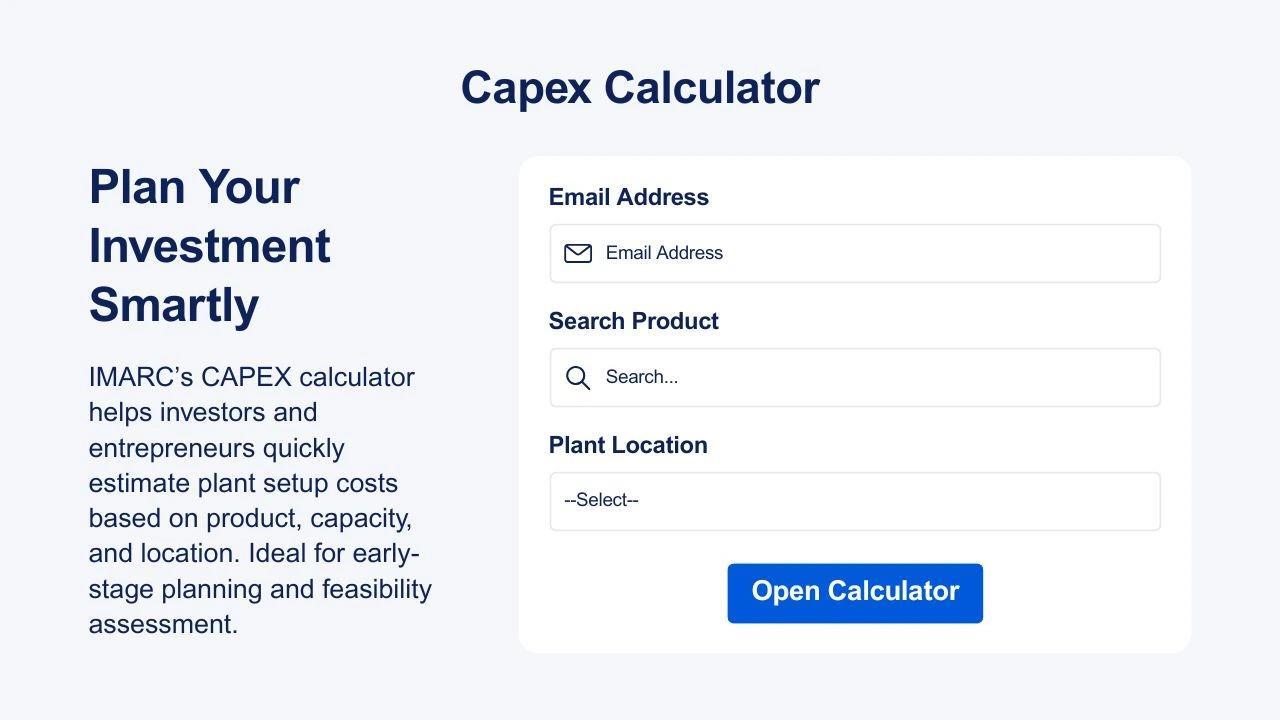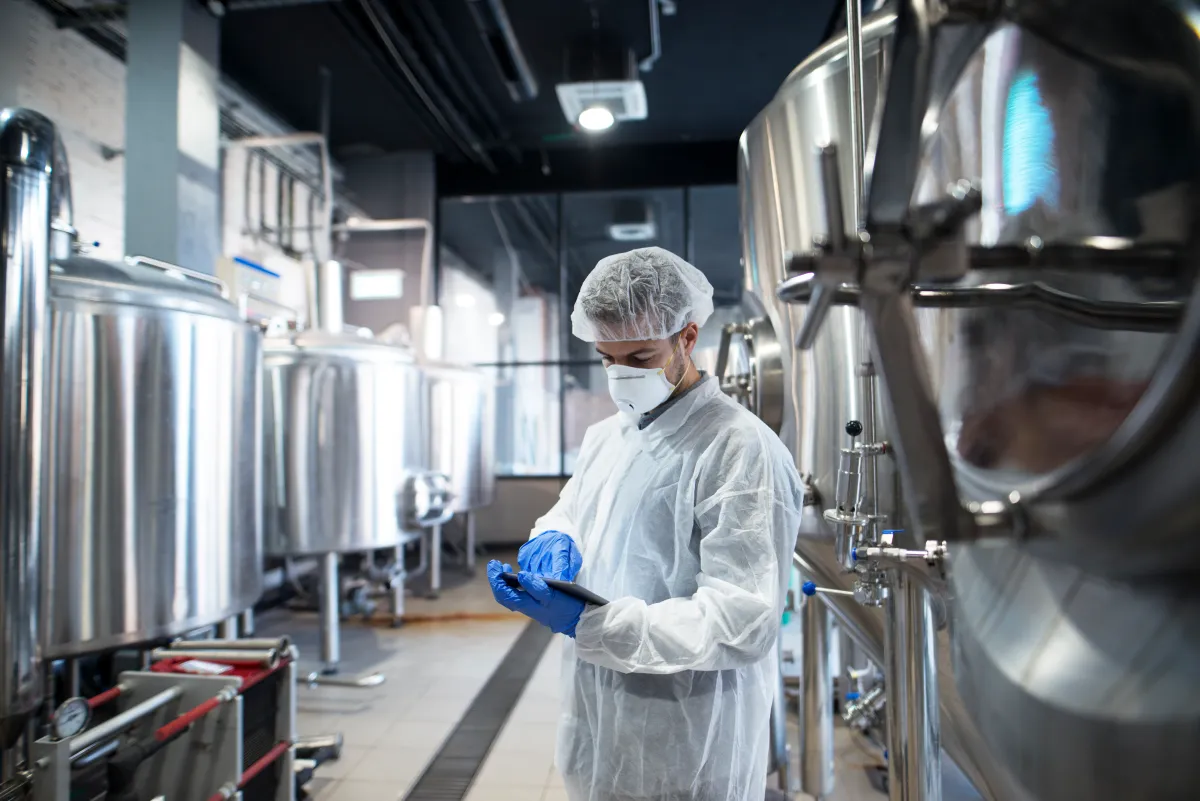Creatine Monohydrate Manufacturing Plant Setup Report 2025: Investment Opportunities And Industry Trends
Setting up a creatine monohydrate manufacturing plant requires careful consideration of raw material sourcing, production equipment, quality control systems, and compliance with food and supplement regulations. Key investments include reactors, filtration units, drying systems, and packaging machinery, along with skilled technical staff to ensure purity and safety standards.
IMARC Group's report, titled “ Creatine Monohydrate Manufacturing Plant Project Report 2025: Industry Trends, Plant Setup, Machinery, Raw Materials, Investment Opportunities, Cost and Revenue,” provides a complete roadmap for setting up a creatine monohydrate manufacturing plant. It covers a comprehensive market overview to micro-level information such as unit operations involved, raw material requirements, utility requirements, infrastructure requirements, machinery and technology requirements, manpower requirements, packaging requirements, transportation requirements, etc.
Request for a Sample Report : https://www.imarcgroup.com/creatine-monohydrate-manufacturing-plant-project-report/requestsample
Creatine Monohydrate Industry outlook 2025:
The creatine monohydrate industry in 2025 is expected to witness steady growth, driven by rising demand from the sports nutrition, bodybuilding, and fitness sectors. Increasing consumer awareness of muscle recovery, strength enhancement, and performance benefits is fueling market expansion, alongside growing adoption among recreational athletes. Technological advancements in production processes are improving product purity and cost efficiency, enhancing competitiveness. Asia-Pacific is anticipated to record the fastest growth due to a surge in fitness culture and expanding dietary supplement markets. However, market players must address regulatory compliance, raw material price fluctuations, and increasing competition from alternative performance-enhancing supplements to sustain profitability.
Key Insights for Creatine Monohydrate Manufacturing Plant Setup:
Detailed Process Flow:
-
Product Overview
Unit Operations Involved
Mass Balance and Raw Material Requirements
Quality Assurance Criteria
Technical Tests
Project Details, Requirements and Costs Involved:
-
Land, Location and Site Development
Plant Layout
Machinery Requirements and Costs
Raw Material Requirements and Costs
Packaging Requirements and Costs
Transportation Requirements and Costs
Utility Requirements and Costs
Human Resource Requirements and Costs
Capital Expenditure (CapEx) and Operational Expenditure (OpEx) Analysis:

Project Economics:
-
Capital Investments
Operating Costs
Expenditure Projections
Revenue Projections
Taxation and Depreciation
Profit Projections
Financial Analysis
Profitability Analysis:
-
Total Income
Total Expenditure
Gross Profit
Gross Margin
Net Profit
Net Margin
Key Cost Components of Setting Up a Creatine Monohydrate Plant :
-
Raw Materials: Raw Materials: Procurement of sarcosine, cyanamide, catalysts, and other chemicals essential for synthesis.
Production Equipment: Investment in reactors, filtration units, drying systems, mixers, and packaging machinery.
Infrastructure & Facilities: Construction or leasing of manufacturing space, utilities setup, and storage areas.
Labor & Staffing: Salaries for skilled chemists, engineers, quality control staff, and operational workers.
Quality Control & Testing: Laboratory setup, analytical instruments, and routine product testing costs.
Regulatory Compliance: Licensing, certifications, GMP adherence, and environmental safety measures.
Energy & Utilities: Electricity, water, steam, and waste management expenses.
Packaging & Labeling: Containers, labeling materials, and branding-related costs.
Economic Trends Influencing Creatine Monohydrate Plant Setup Costs 2025 :
-
Raw Material Price Volatility: Fluctuations in sarcosine and cyanamide prices due to global supply chain pressures and chemical industry demand shifts.
Energy Cost Inflation: Rising electricity and fuel prices impacting production and drying processes.
Regulatory Tightening: Stricter GMP, food safety, and environmental compliance increasing setup and operational expenditures.
Technological Advancements: Adoption of more efficient production methods lowering long-term costs but requiring higher initial investment.
Labor Market Dynamics: Increased wages for skilled chemical engineers and quality specialists in competitive manufacturing hubs.
Currency Exchange Rates: Impacting import costs for equipment and raw materials in export-oriented regions.
Speak to an Analyst for Customized Report: https://www.imarcgroup.com/request?type=report&id=16251&flag=E
Challenges and Considerations for Investors in Creatine Monohydrate Plant Projects:
-
Regulatory Compliance: Meeting stringent health, safety, and environmental standards across multiple jurisdictions.
Market Competition: Facing established global brands and low-cost regional producers.
Quality Assurance: Maintaining high purity and consistency to meet consumer and industry expectations.
Supply Chain Risks: Dependence on stable and cost-effective raw material availability.
Capital Intensity: High upfront investment in specialized equipment and infrastructure.
Technological Upgrades: Need for continuous improvement to remain competitive and efficient.
Market Demand Fluctuations: Sensitivity to trends in sports nutrition and fitness markets.
Conclusion:
The creatine monohydrate industry in 2025 presents significant growth potential, driven by expanding fitness trends, increasing sports supplement consumption, and technological advancements in manufacturing. Establishing a production facility offers promising returns but requires substantial capital investment, stringent regulatory compliance, and robust quality control measures. Investors must carefully evaluate raw material sourcing, operational efficiency, and market positioning to remain competitive in a landscape marked by price volatility and evolving consumer preferences. Strategic planning, adoption of advanced production technologies, and alignment with global quality standards will be critical for achieving long-term success in creatine monohydrate manufacturing ventures.
About Us:
IMARC Group is a global management consulting firm that helps the world's most ambitious changemakers to create a lasting impact. The company excel in understanding its client's business priorities and delivering tailored solutions that drive meaningful outcomes. We provide a comprehensive suite of market entry and expansion services. Our offerings include thorough market assessment, feasibility studies, company incorporation assistance, factory setup support, regulatory approvals and licensing navigation, branding, marketing and sales strategies, competitive landscape, and benchmarking analyses, pricing and cost research, and procurement research.
Contact Us:
IMARC Group
134 N 4th St. Brooklyn, NY 11249, USA
Email: sales[@]imarcgroup.com
Tel No:(D) +91 120 433 0800
United States: (+1-201971-6302)
Legal Disclaimer:
MENAFN provides the
information “as is” without warranty of any kind. We do not accept
any responsibility or liability for the accuracy, content, images,
videos, licenses, completeness, legality, or reliability of the information
contained in this article. If you have any complaints or copyright
issues related to this article, kindly contact the provider above.
Most popular stories
Market Research

- Daytrading Publishes New Study On The Dangers Of AI Tools Used By Traders
- New Silver Launches In California And Boston
- Digital Gold ($GOLD) Officially Launches On Solana, Hits $1.8M Market Cap On Day One
- Meme Coin Little Pepe Raises Above $24M In Presale With Over 39,000 Holders
- Bitmex And Tradingview Announce Trading Campaign, Offering 100,000 USDT In Rewards And More
- Your Bourse And B2BROKER Partner To Deliver Complete Brokerage Solutions






















Comments
No comment